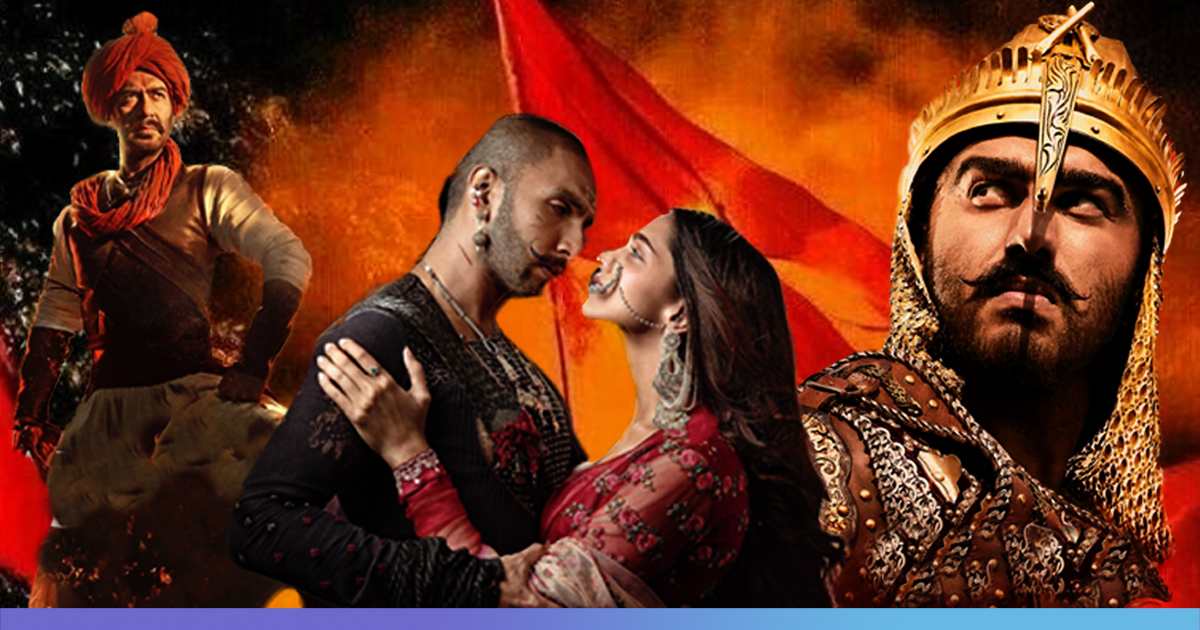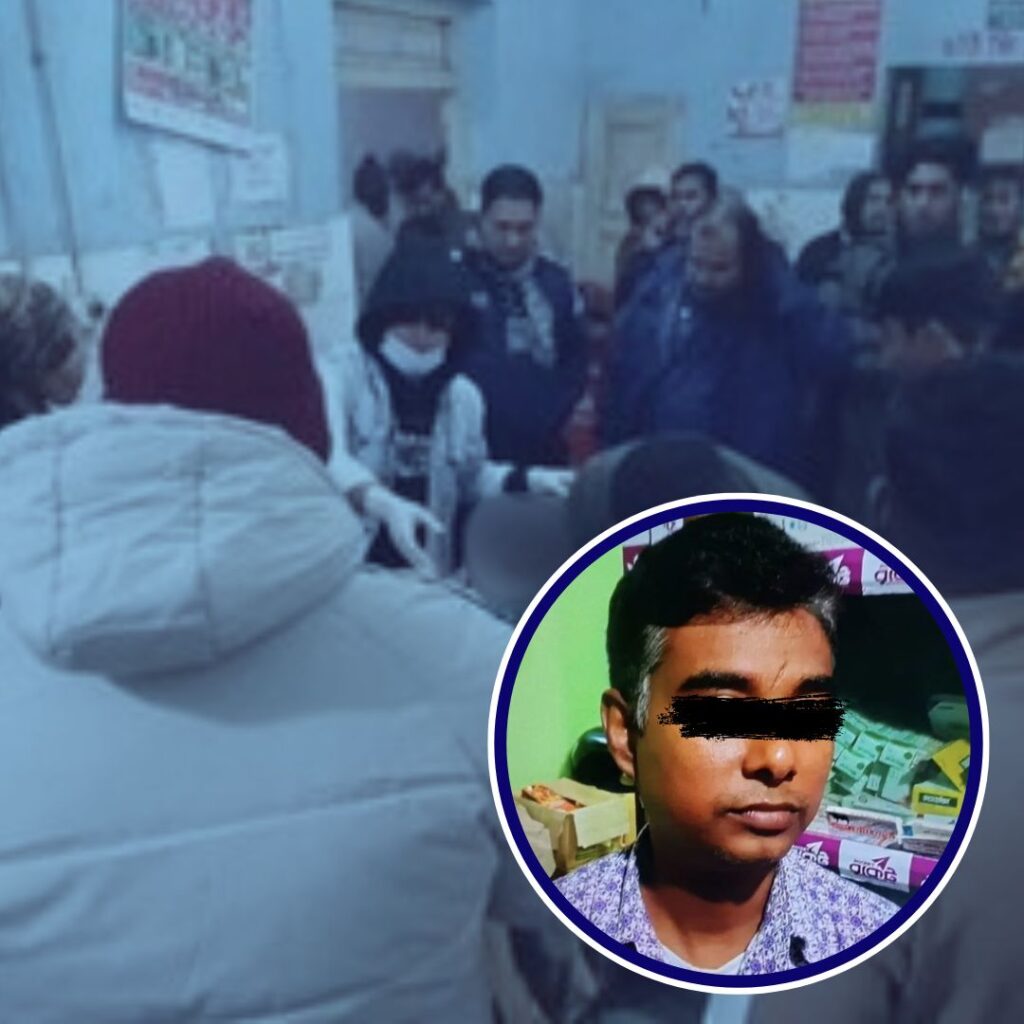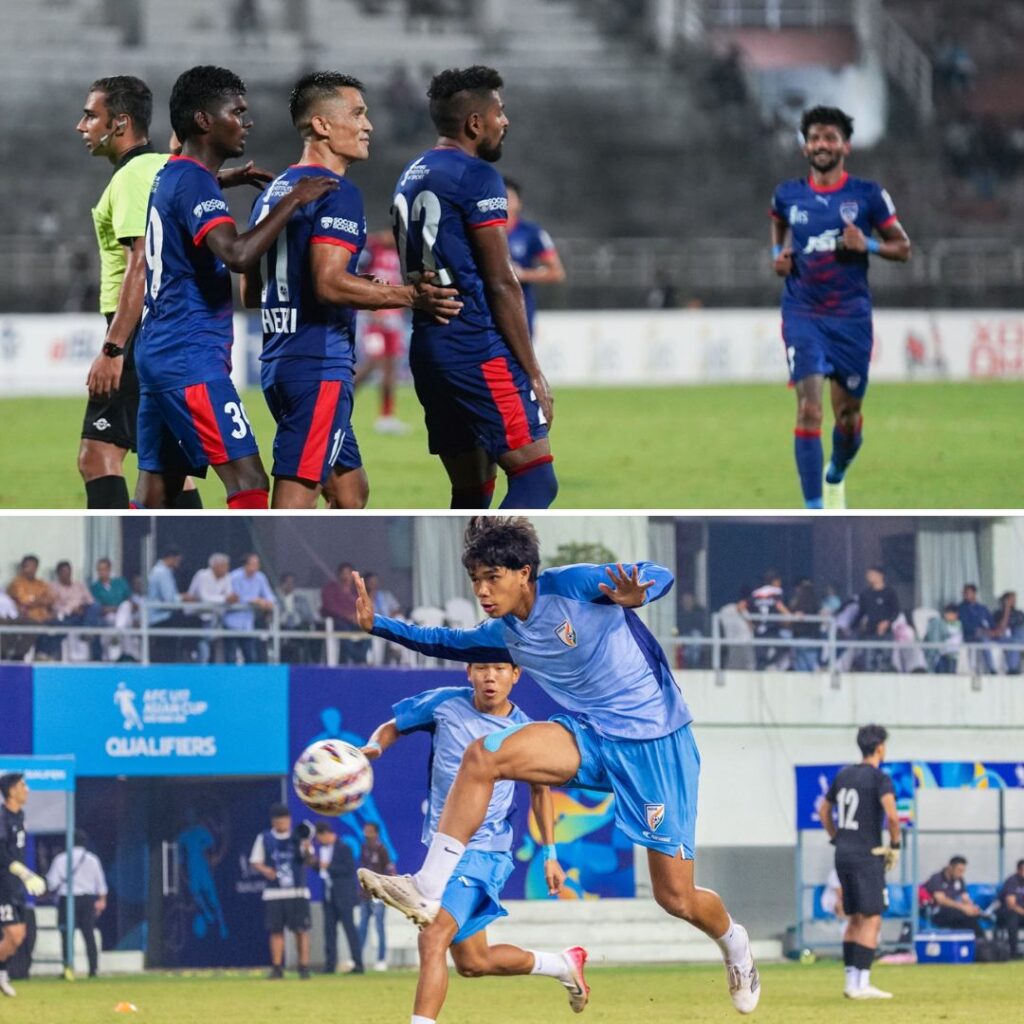Since 2015 Bollywood has given India many films that are ‘inspired’ from history but aren’t quite history in any sense.
Instead of creating their own heroes or legends for their ‘imaginative’ and ‘inspired’ artworks, Bollywood chooses the premise of real events, stories, and places – without being bothered to even change the names of their projected characters.
The makers of these films have often argued that it is their artistic right to ‘reimagine’ history and look it through a kaleidoscope of possibilities. However, all of these recent ‘works of art’ have conveniently aligned with the saffronized version of the same historical story.
Thus, we might be soon subjected to a film that showcases the life of Jawaharlal Nehru (as the grandson of an Afghani migrant, Ghiasuddin Ghazi), who was a ‘Muslim’ born in a brothel in Allahabad.
Laughable to the ones well-read and aware, these ‘histories’ are sinister and pervasive with a growing constituency of Indians who consume these figments of Hindutva-inspired imagination as hard and fast truths.
RSS stalwarts have time and again called for the ‘rewriting’ of history and the most recent statement of this fashion came from the Union Home Minister, Amit Shah – who called for a revision of history from an ‘Indian standpoint’.
Therefore it is not too hard to draw a parallelism between BJP’s ascent to power and the rise of jingoist Hindi cinema.
Old and watched: Bajirao Mastani, Padmaavat, Manikarnika, Kesari Panipat and Tanhaji
The plot is almost the same each time – a glorious war over land or morals is fought, unfailingly against a ‘Muslim’ antagonist.
Panipat

The movie is spun around the rhetoric of “good vs evil”, represented by janehu-dhaari Peshwas and diabolical-looking Ahmad Shah Abdali. The presentation of the characters is so obviously clichéd that they cement in the viewer’s conscience as “Hindu vs Muslim”.
The film’s title is accompanied with “the great betrayal” perfectly coinciding with Amit Shah’s overused hyperbole of the 1761 battle. At a party meeting before the 2019 Lok Sabha elections, Shah had said that the BJP had to win the polls as they were like the battle of Panipat, which could not be lost this time.
However, as per history, Aurangzeb’s demise saw the Mughal empire waning at its seams. Concurrently, the Marathas were increasing their foothold across the Land of the Indus virtually ruling Delhi by the middle of the 18th century.
The 27-year Mughal-Maratha war (1680–1707) had financially crippled the Mughal empire and help the Marathas make rapid territorial gains. In 1737, the Mughals were defeated with much of south of Delhi coming under Maratha control.
Abdali, after having looted the rulers at Delhi at that time, had appointed Afghan governors in Punjab to overlook the region for him. But Imad-ul-Mulk – a political influencer of the time, invited the Marathas to invade Delhi and drive out Najid-ud-Daulah – a Rohilla chief planted by Abdali.
Peshwa Baji Rao’s younger son, Raghunath Rao acted on the invitation and lead the conquest by invading Punjab in 1758, subsequently bringing the Marathas into direct confrontation with the Durrani empire of Ahmad Shah Abdali.
The defeated Najid-ud-Daulah appealed to Abdali, who sent his son Timur Shah to help. But Timur lost to Raghunath Rao and forcefully returned.
“Now this entire incident of defeating Timur Shah was taken very personally by Abdali as he stormed through India and ransacked Mathura and Delhi, engaging in national looting and arson on the way,” says Dr Avkash Jadhav, Head of History department, St Xavier’s College.
This triggered the third battle of Panipat and Abdali defeated Sadashiv Rao Bhau – Peshwa’s cousin, driving the Marathas out of the north for decades to come.
The battle was fought between the combined forces of Durrani, the Rohillas of Doab (Afghans by origin) and the Nawab of Awadh. Shuja-ud-Daulah, who was the Nawab of Awadh at the time was being called by the Marathas as well as the Afghan army to act as an ally and he made the decision to join the Afghan-Rohilla coalition.
Neither the Rajputs nor Sikhs agreed to join the Marathas in battle – largely owing to the failing Maratha diplomacy since Shivaji’s demise, and the rest is history.
Around 40,000 or 50,000 Maratha soldiers were killed, however, Abdali made no territorial gains and left the region after winning in Panipat.
The movie showcases the battle as a fight to defend India from foreign invasion.
In the trailer, Sadashiv Rao Bhau’s mother says, “Iss baar Abdali ko aisa sabak sikhao ki woh Hindustan ki taraf dekhne ki himmat bhi na kare” (teach Abdali such a lesson that he won’t dare to even look towards India).
And in addition, Arjun Kapoor’s character also says, “Mai iss dharti ki mitti ke ek kan ke liye bhi marne ko tayyar hun.” (I am ready to die for even a simple grain of dust of my motherland.)
The Marathas were literally fighting on the land of Punjab for their recently conquered northern territories. These were the uber fertile plains of Ganga and Yamuna – cash cows and money minters for all emperors who ruled those lands. The Marathas went into battle over territory and political power and not to keep ‘Muslim foreigners’ out of their ‘homeland’.
Northern India wasn’t even their homeland.
And, at that time and age, there was no ‘India’ but just a vast number of squabbling kings whose empires were nations in themselves – waiting for the next chance to annex their neighbouring countries.
Tanhaji

The term ‘surgical strike’ became commonplace after the 2016 surgical strikes which were carried out as a reaction to the killing of 20 Indian soldiers in Uri by Jaish-e-Mohammed terrorists.
Now the expression is callously dropped around by politicians in rallies to drive nationalist emotions and was also widely used to refer to the Modi-led government’s demonetisation move.
But Ajay Devgan’s Tanhaji helped the term’s employment achieve its newest low – using it to amplify the jingoistic subtext of the film based on the Battle of Sinhgad (1670).
The movie is slated for an early release in January 2020 but the trailer has an overwhelming number of glaring historical inaccuracies.
The story, no doubt, is a real record of a glorious Maratha victory against Udaybhan Rathod, a Rajput fort keeper under Maharaja Jai Singh (senior general of the Mughal army).
In 1665, the Treaty of Purandar required Shivaji to give up the heavily fortified and strategically placed Maratha fort of Kondhana, located near Pune, to the Mughals. This was a legally signed agreement by the great Maratha ruler himself.
But the idea of Mughals owning the fort enraged Shivaji’s mother Jijabai, who demanded that her son and his army recapture it. Shivaji thus entrusted Taanaji to reconquer fort Kondhana and legend has it that Taanaji used his pet monitor lizard to scale the steep mountain and launch an attack against Udaybhan’s army.
However, the trailer to the film does little justice to present facts as they are. Although dramatization and exaggerated theatrics are normal for a movie, Udaybhan’s portrayal as a fort keeper sporting a Pathani turban despite being a Rajput, lining his eyes with surma (common amongst present-day Muslim men) and walking around in black and dark sets (colours associated with Islam) do little to tell the audience about his Hindu identity.
His portrayal in the film paints him as a shady character, as it is brought alive on the screen by manifesting Muslim stereotypes.
NCP MLA Dr Jitendra Awhad even wrote to the filmmakers to get their facts right and the extremist fringe group Sambhaji Brigade penned a letter to the makers raising objections against the non-secular depiction of Shivaji.

‘Bhagwa’ the word for saffron which has widespread symbolism in Hindu and Buddhist culture, was historically the flag of the Marathas but without the ‘Om’ symbol at its centre. Tanhaji: The Unsung Warrior uses the Maratha flag but communalises the banner of the empire.
Another objectionable narrative being pushed by the film is of Brahminical supremacy as Kajol – who plays Tanhaji’s wife, Savitribai Malusare – says, “Jab Shivaji Raje ki talwaar chalti hai, tab aurto ka ghoonghat aur Brahmano ka janeu salamat rehta hai” (When Shivaji draws his sword, it safeguards the honour of women and the sacred thread of Brahmins).

The protagonist of the film, Tanaji Malusare, belonged to the marginalised Koli community and it was Shivaji’s inclusive policies that gave space to people of lower castes and different religions in his empire’s administration. But the filmmakers have chosen to rave about Brahmins for some reason, so much that they have dressed up Kajol as a Brahmin woman – in complete denial of Savitribai Malusare’s Koli identity.

Bajirao Mastani
The film, Bajirao Mastani, was a tribute to the romantic legend of Peshwa Bajirao I and Mastani.
Based on Nagnath S Inamdar’s Marathi novel, Raau, the film gives a disclaimer at the very outset clarifying that its depictions aren’t precise in spite of the premise being a real and recorded period in time.

Historians and other experts came out during its late December release in 2015 and cleared the air around the authenticity of the legend.
Even though a line of Mastani’s descendants from Peshwa Bajirao I are still alive today, very little is known about their marriage and the passionate love saga is the brainchild of many novels that have romanticised the Marathi chief minister’s relationship with the Iranian princess.
The film, except for some intermittent deviations from depicting culturally-accurate clothing and lifestyle, is hardly problematic in comparison to the slew of hyper-nationalist movies that followed its release but the opening credits raise eyebrows.
Anyone sitting through the opening credits will spot Ranveer Singh, who essays Baji Rao’s character, calling for a ‘Hindu Swaraj’ while graphics simultaneously display a map of the expanding Maratha confederacy as ‘Hindustan’ – the Persian word for India that meant the Land of the Indus.
“Apni dharti apna raj, Chhatrapati Shivaji ka ek hi sapna – Hindu Swaraj”, Baji Rao roars in the film. But, Shivaji was never the Hindu fundamentalist as portrayed in saffronized discourse. He was a secular king with several Muslims serving under him and never called for a Hindu Swaraj, but a ‘Hindavi Swaraj’ – self-rule of Indian people.

In spite of the fact that Baji Rao I led several conquests between 1720 to 1740 against neighbouring empires – especially the Mughal kingdom – it was not for ‘Hindu Swaraj’ but for the rule of Marathas over every adjacent nation – something every ruler in history dreamt of.
Known for his exceptional military and administrative skills, Baji Rao had helped his emperor, Shahu, spread his rule to almost all of India for a brief period of time. But it is important to note that during the mentioned period, the concept of ‘India’ did not exist and the Marathas fought for an all-encompassing Maratha empire.
This erroneous religious subtext is prominent when Ranveer’s character goes on to say: “Ek Hindu raaja dusre Hindu raje ki madat karne jaa raha hai” (a Hindu king is going to help another Hindu king), as he agrees to fight for Maharaja Chhatrasal in the film.

It wasn’t about Hinduism or religion but about power through conquest.
Also Read: Article 15’s Bold Characters & Sharp Storytelling Mirror A Society In Despair












